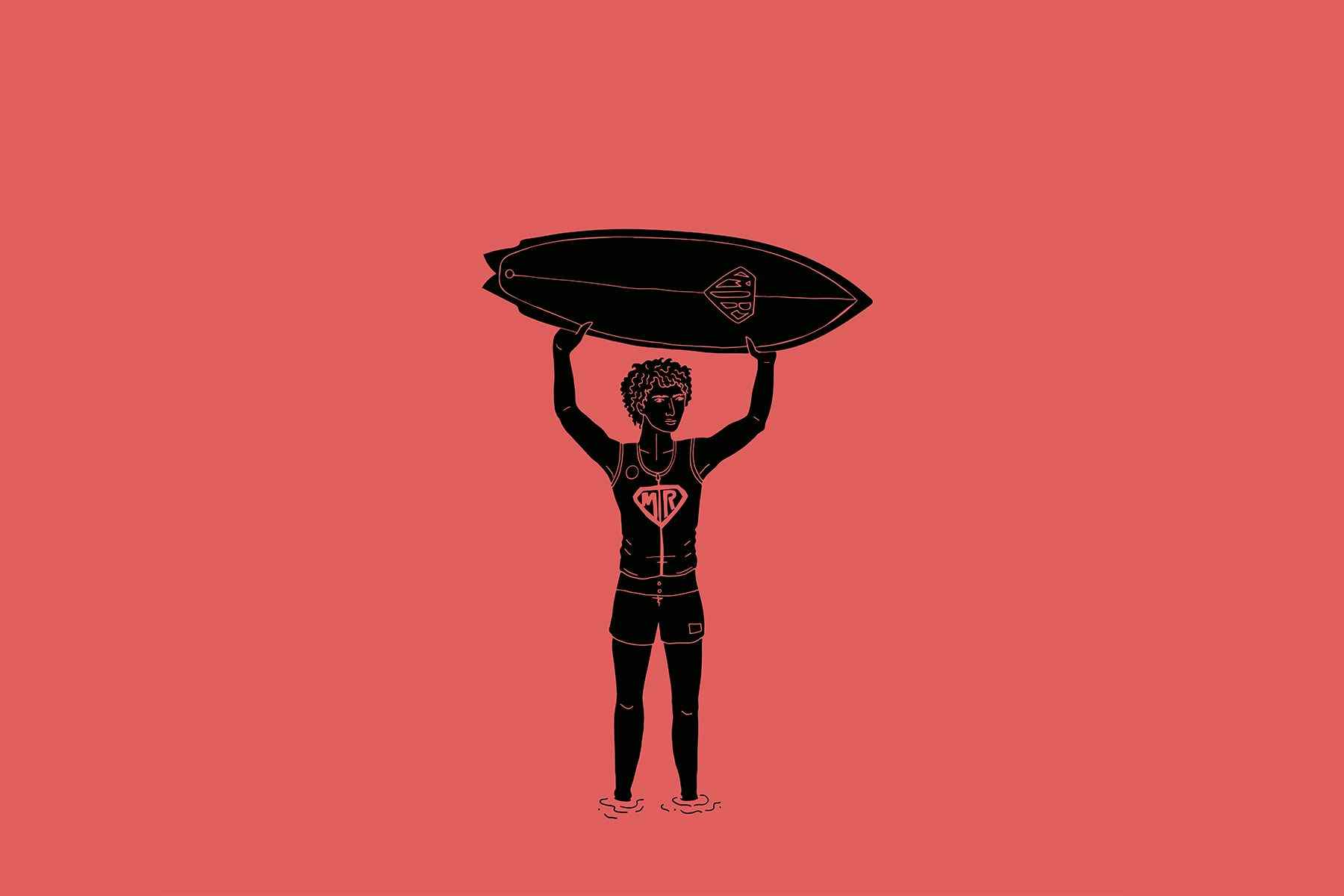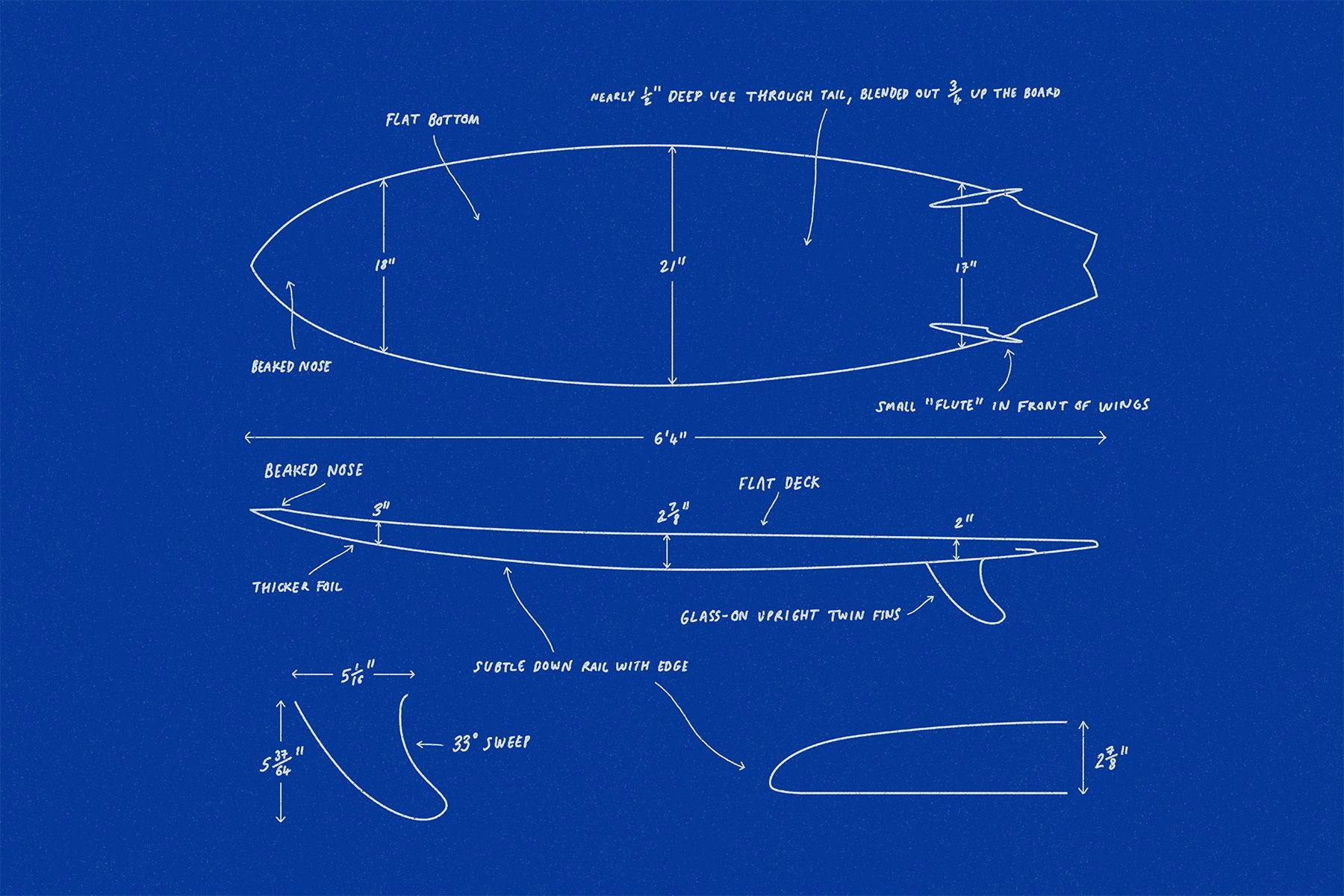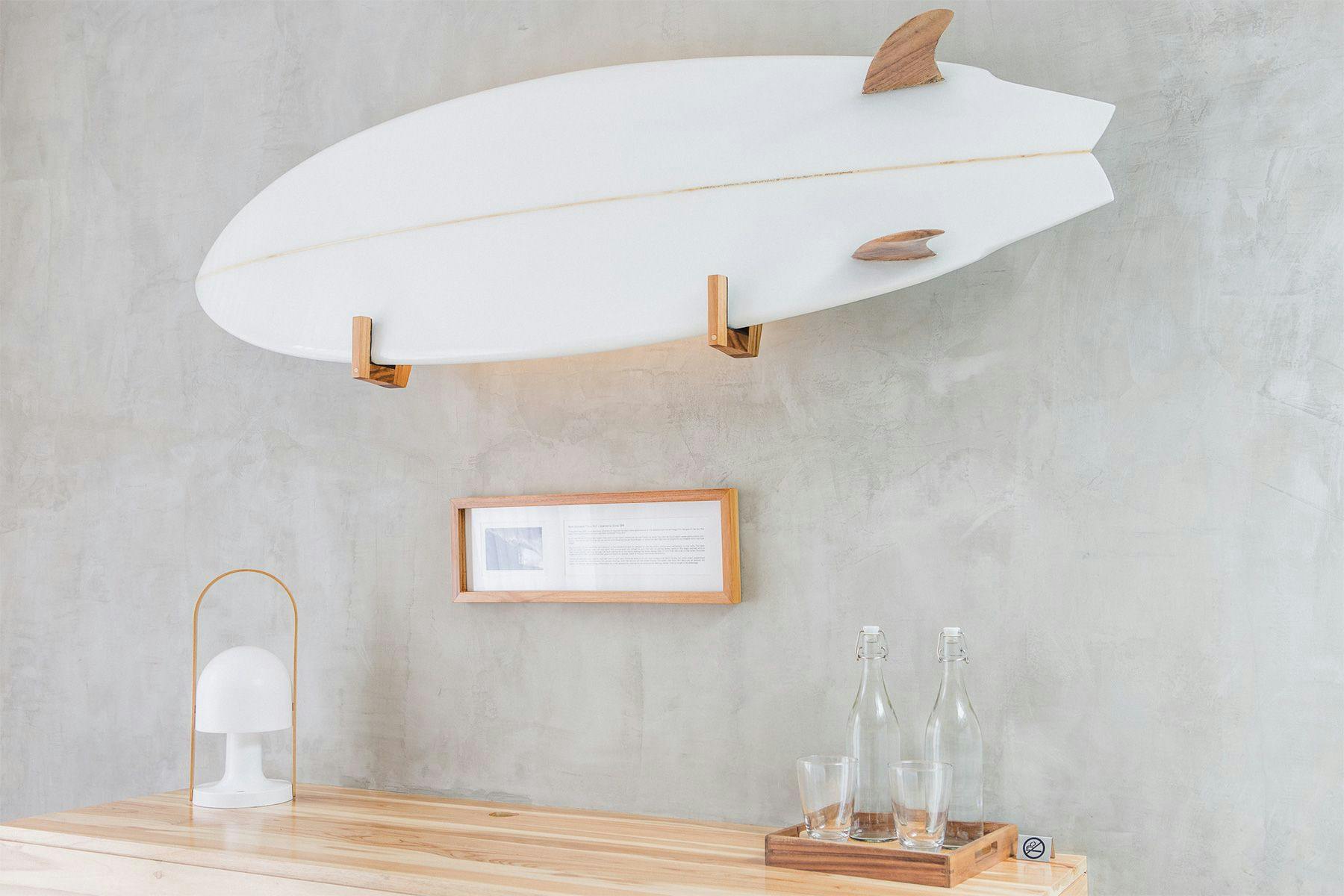SurfboardsThe History Of Surfboard Design: Mark Richards’ Twin Fin

In 1976, Australian surfer Mark Richards – inspired by Reno Abellira’s surfing on a fish and schooled by Shortboard Revolution forerunner Dick Brewer – began refining his own version of a twin-fin surfboard design, settling on the prototypic 6’2” model (aka the Free Ride Twinfin) in 1977. Although unsuited to most surfers in larger waves, when ridden in small-to-medium surf conditions MR’s twin-fin had the potential to produce more speed and facilitate greater manoeuvrability compared to its single-fin predecessor. Such possibilities pushed the concept of high-performance surfing further than ever before, resuscitating the taste for the radical, whilst also carrying Richards to four consecutive world titles.
The Historical Context
The concept of a surfboard with two fins existed nearly three decades before Mark Richards developed it into an actual surfboard model as opposed to a design feature: first and most notably with Californian Bob Simmons back in the late 40’s as an attempt to stabilise his wide-tailed shapes; then with Surfboards La Jolla’s Nick and Bear Mirandon and their Twin-Pin model of the late 60s; followed by Steve Lis’ kneeboarding-oriented, dual-fin fish design at the turn of the decade; and finally with the Eaton-McCoy coalition and their meaty twin-fin representation. Yet, the double-finned surfboard remained a somewhat niche concept, praised and appraised by few and seemingly not as marketable as the single-fin set-up.
Australian world tour competitor Mark Richards was one surfer to give the early twin-fin designs a shot, eventually burning out on them and following the lure to Ben Aipa’s Sting models. Towards the end of 1976, however, after witnessing Reno Abellira’s performance with a 5’3” Lis fish at the Coke Classic in Australia, Richards decided to explore the potentials of the dual-fin design further. He spent two months in Hawaii learning from local shaper Dick Brewer, and by the end of the apprenticeship had enough practical shaping ability and ideas to develop what would be the original twin-fin surfboard model (a 6’2” wing-swallow tail). Once Richards kickstarted his world title winning spree, it didn’t take long for surfers to overlook the design’s idiosyncrasies and want to try it for themselves. More than just a design-leap, the range of manoeuvrability provided by the twin-fin also led to a leap in levels of performance, consequently planting the seeds for yet another fin to be introduced at the beginning of the 80s.
Why Was This Development Necessary?
By the second half of the 1970s, surfboards were decreasing in size at lightning speed. This was in response to surfers’ changing attitude towards wave-riding and, consequently, the way that competitions on the new pro tour were judged. If you wanted to win, you were expected to manoeuvre your way along the wave, hitting the lip as often and as hard as possible, and not just cruise down the line. Although a single-fin was still the overall board of choice for hollow and big-wave locations, when the swell died off and the contest had to run in small conditions, the surfing on that kind of board couldn’t live up to the judges’ expectations.
An avid competitor and radical surfer, Mark Richards was aware of a single-fin’s limitations in small surf and dreamt of ways of eschewing the straight-line type of surfing determined by their narrow tails. He found in the combination of a twin-fin setup and increased lift from a wider tail the properties that allowed for faster and more responsive surfing, drawing steeper and more powerful arcs across the face without sinking the tail during a turn, which propelled the board enough to start attacking the lip section of a wave. “Performance surfing” had just won its “high” prefix.

Who Was Involved?
Born in 1957 in Newcastle, Australia, Mark Richards was something of a surfing prodigy. Influenced by his father’s relationship with the culture both in (as a surfer) and out (as the first surf shop owner in Newcastle) of the water, Richards began stand-up surfing at the age of six years old, placing runner-up at the Australian National Titles junior division and joining the national team for the World Surfing Championships when only fifteen years old. At eighteen, he won two pro contests in Hawaii, carving his name in the international surf scene; then at age 22, packing his own redesign of the twin-fin surfboard and a polished, powerful, turn-focussed style, Richards won his first world title, repeating the feat for the following three seasons.
Richards’ shaping experience began when he was gifted a planner at thirteen years old, but it wasn’t until heading to Hawaii in the winter of 1966-67 to work under Dick Brewer that his relationship with surfboard design stepped up a level. Having honed his technique, Richards set off to create some of the ideas that had been simmering in his head, most of which revolved around improving his performance on the small-wave events in the World Tour. This led him to rework the twin-fin design to fit his tall and slim build, style, and ambitions.
Design Details
Even before MR’s development of the twin-fin model, a double-fin configuration had always been synonymous with speed, due to the way water channels between the two fins. In that sense, what made Richards’ design unique wasn’t the fact that it had two fins, but the way in which he combined other design elements – chiefly the shape of the tail and the position and outline of the fins – to optimise the design’s potential, creating a more versatile craft altogether.
With a concave fluted wing near the tail and nose-to-tail hard rails, the MR Twin bit into the wave enough to give the board more drive and stability when arcing his way up and down the face; the combination of an increased width in front of the wings with reduced surface area behind them, provided enough grip to hold through turns without compromising speed or spinning out – which was something single-fins struggled with when under-pressure.
Richards was focussed on carving powerful arcs, and the way in which one fin works as a pivot point for the other in a twin setup allowed him to do just that, redirecting the board with ease. However, the bigger and more powerful the waves grew (6ft being a generous threshold), the more difficult it became to control this pivoting tendency, particularly in deep bottom turns.
With no trailing centre fin, previous twin fins had the two fins placed pointing forward, creating the opportunity to track down the line, with less drag and riding faster than a single-fin. But since Richards prioritised curves over lines, he angled both fins inward (toe-in) whilst also leaning them out (cant), thus reducing the board’s susceptibility to track.
Although a mere 6’2”, which was a short surfboard for someone with Richards’ build, the board’s outline also had a lot of surface area towards the nose so that paddle speed wasn’t sacrificed. More overall planning surface also meant more speed, and by making the board smaller than the standard of the time, Richards made it even more manoeuvrable.
Specifications
Avg Minimum Avg Maximum Length 6’2” 6’6”
Width
Nose Midpoint 20 1/4” 20 3/4” Tail Thickness 2 3/4” 2 3/4” Weight or Volume? 38.75 L 42.25
